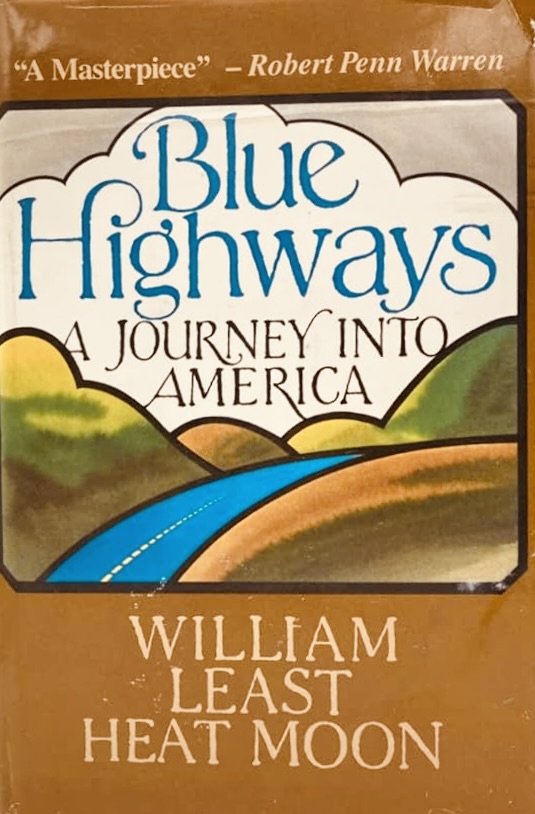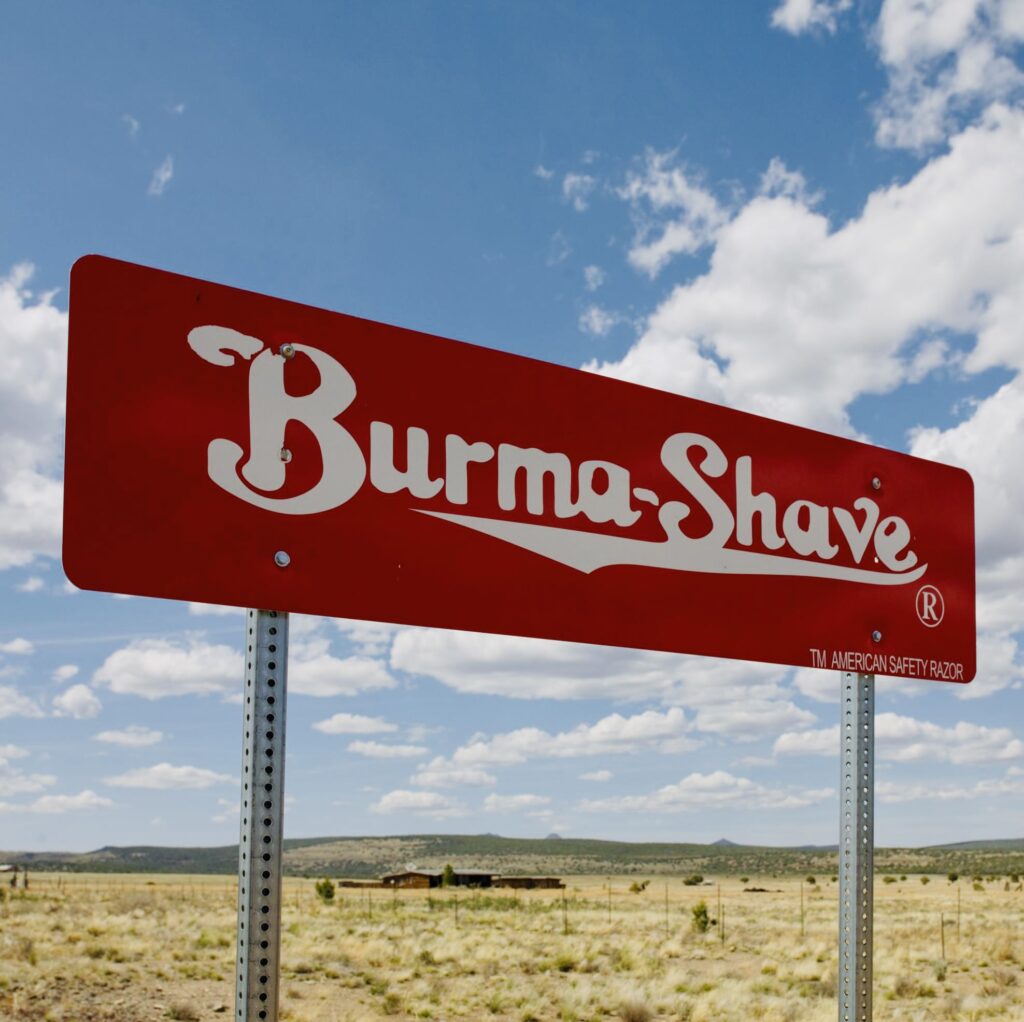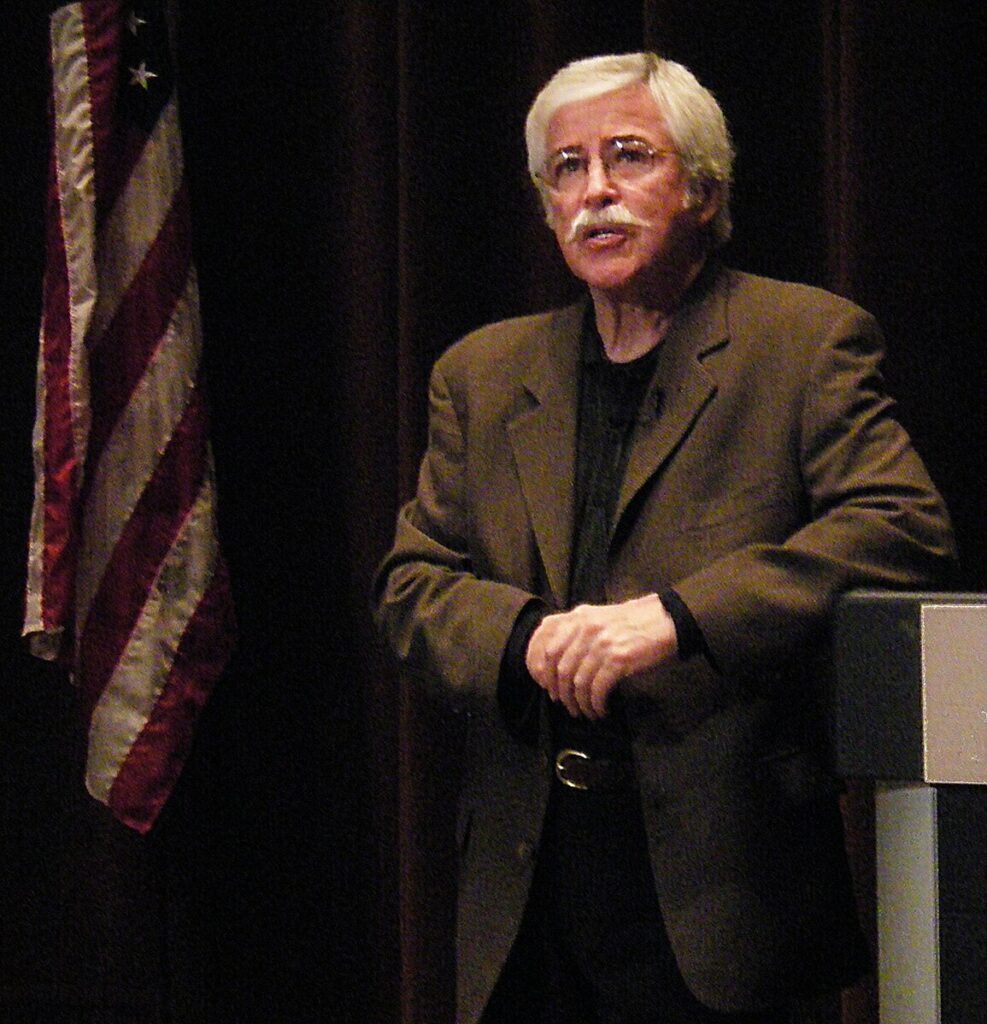Originally published in 1982, Clay says William Least Heat Moon’s Blue Highways is still our best backroads manifesto.

With the 1982 publication of Blue Highways: A Journey into America, William Least Heat Moon (aka William Trogdon) changed how we think about road journeys in America. However much you may admire Jack Kerouac’s On the Road, you are unlikely to hitchhike around America in the 21st century or climb onto a Greyhound bus in Fresno on your way to New York City. Robert Pirsig’s notion that it might be fun to travel America on a motorcycle that requires your own frequent scraped knuckle maintenance is not likely to appeal to more than a small fraction of people.
I first read Blue Highways immediately after it was published, and it made me ache to travel America. I have read it twice since and taught it, too. Now that I am about to embark on my own journey on America’s blue highways, I read it again last week. This time, I read it to see to what extent it might serve me as a manual and perhaps even as a cautionary tale.
A blue highway is a two-lane road, a back road, left behind when the Interstate Highway System revolutionized the American road experience.
A blue highway is a two-lane road, a back road, sometimes a farm-to-market road, or an asphalt highway left behind when the Interstate Highway System revolutionized the American road experience in the 1960s and 1970s. The pace of traffic was much slower, sometimes maddeningly slower. The blue highways went through the heart of towns and villages not around them. They were more intimate with the countryside than the great majority of interstate highways. They were graced with roadside fruit stands, Burma-Shave signs, funky ma and pa “antique” shops, shag carpet motor courts, and — as you got farther west — such kitsch as motels in the shape of teepees, dinosaurs, or perhaps partly embedded in caves. Some of the old motels survive with un-updated neon welcome signs that promise “Air Conditioned Rooms” or “A TV in Every Room.” If you want to see the world’s largest ball of twine, you must be on a blue highway. If you get behind a farm truck, you might be forced to slow down to 40 mph for a dozen miles before you find a safe place to pass. You can pull over almost anywhere without being swept into the vortex of a passing 18-wheeler.

Once the interstate system was completed (October 14, 1992), the pace of road travel in America accelerated dramatically. For example, it was now possible on I-80 to drive the 2,919 miles from Teaneck, New Jersey, to San Francisco without ever entering a town or bumping up against a traffic signal or stop sign. If your car could be refueled like an F-16 fighter jet without stopping or breaking speed, and you wore an adult diaper of the sort former astronaut Lisa Nowak purchased for her madcap love triangle run from Houston to Orlando in 2007, you could cross America without stopping. At 70 mph, this would take just 41.7 hours. I have a soft spot in my heart for Ms. Nowak: the heart wants what the ball-peen hammer and the can of pepper spray want.
Over four decades ago, Least Heat Moon (LHM) taught us that to experience America in a car, you must get off the freeways and onto the secondary and tertiary roads. You must slow down, open the windows (preferably hand-cranked), and travel without any obsessive itinerary. You must be prepared to let way lead on to way, to take the road less traveled, to take seemingly pointless detours on a whim, and to avoid the homogeneity of chain restaurants.
Blue Highways is our best backroads manifesto. The book has been so influential that motorists who want to experience America feel shame when they cheat their way for a day or two on the interstates.
In some respects, the idea of the book holds up better than the book itself. And yet, there is so much to admire in Blue Highways. What LHM undertook in 1978 now feels so contemporary (think of Nomadland) that the book deserves a second life, maybe with a new afterword. He helped create a lifestyle phenomenon that is now growing rapidly throughout the United States. He traveled America in a converted Ford minivan that he fixed up inside as his road quarters. Some cities are even reforming their laws to permit those refitted vans to park overnight in residential areas.

Thirty-eight years old, out of work, brooding over a 10th-year breakup with a woman he called Cherokee, he leaves (or tries to leave) his troubles behind. He takes to the open road, “as stories must, when love’s denied, with tears and a journey,” as Judy Dench (Elizabeth I) tells Gwyneth Paltrow (Viola De Lessops) at the end of the film Shakespeare in Love. For three months and 13,000 back road miles, LHM encircled the perimeter of America along much the same route John Steinbeck traversed in 1960. However, Steinbeck makes only a single unimportant appearance in Blue Highways. Least Heat Moon’s muses seem to be the Lakota seer Black Elk and the poet Walt Whitman, who frequently appear on the pages of Blue Highways. Not Steinbeck and not Kerouac.
Least Heat Moon knows how to get himself into a conversation. He admits defeat on the few occasions when he can’t make it happen. Usually, he approaches (or is approached by) a stranger in a café or bar, and an interesting conversation ensues. Some of the people he met along the way were bigots, racists, and misogynists, and a solid majority might be characterized as socially marginal. But most people he encountered had interesting ways of looking at things. I’m unclear about how the author recorded all those conversations, but they ring true. He carried a micro-recorder, but it cannot have been handy or turned on in all the encounters that found their way into the book.
Least Heat Moon is not afraid to take risks. He drives thousands of miles on primitive and sometimes unsafe roads when he might have chosen instead to take the more recent and better-graded (but still not interstate) highways. Least Heat Moon parks for the night in places where he is not legally welcome. He trusts most of the people he meets, sometimes in what might be regarded as dicey zip codes. He follows a college student he just met into his dorm room to see a prized Hopi food item. He gravitates to quite a few iffy roadside cafes a little too far from main street in search of authentic regional cuisine and live local music. He mouths off a bit to horrible people. He is a modified, limited foodie and local speciality sampler before that became a thing. A long journey will always bring real challenges and cannot be completed without leaning on the kindness of strangers. He did a fair amount of leaning.
Great Writing
Least Heat Moon is often an outstanding writer. Look at this portrait of a woman in Nevada playing a slot machine like a zombie.
“… a woman, face as blank as a nickel slug, pulling dutifully on the slot handles. She had stood before the gears so many times she herself had become a mechanism for reaching, dropping, pulling. Her eyes were dark and unmoving as if unplugged. The periodic jangle of change in the winner’s cup moved her only to reach into the little coffer without looking and deposit the coins again.”
I have seen this woman a thousand times, and such men, too. The passage is uniformly good prose, but the key piece of genius is “gears.” About to describe the woman as an automaton, he places the word “gears” right where it will have the maximum effect on the quality of the passage.
Or this:
“A car whipped past, the driver eating and a passenger clicking a camera. Moving without going anywhere, taking a trip instead of making one. I laughed at the absurdity of the photographs and then realized I, too, was rolling effortlessly along, turning the windshield into a movie screen in which I, the viewer, did the moving while the subject held still.”
LHM describes a self-revelation everyone has experienced while driving through the middle of nowhere: with the windows rolled up and the air conditioning keeping things windless and temperate, with the cruise control doing the pedaling, and listening to your favorite tunes on the entertainment system, you are not truly experiencing the West. Instead, you see America roll by from within a hermetically sealed climate-controlled bubble; the view seems more like a movie reel than an actual landscape.

You cannot hike the day’s 250 miles or amble through on horseback. Still, you can let some of the spirit of place waft into the car by slowing down, opening the windows, and turning off the entertainment package. Of course, it’s important to stop every half hour or so to stretch and breathe in America.
In this important passage, Least Heat Moon provides a perfect analogy by imagining the windshield as a movie screen, but he takes it deeper with a lovely piece of wit — that, in this case, the screen did the moving, and it was the landscape that was motionless. It’s also significant that he checked his Thoreauvian righteousness by taking a moment to examine it. It would be so easy to pontificate a journey like this in the manner of Edward Abbey or Dr. Hunter S. Thompson. LHM catches himself, with “realized I, too …” This is one of the reasons that his book is so beloved. He knows that he is often in danger of taking himself too seriously (like the rest of us), but he usually finds a self-deprecating way of letting the Mosaic Charlton Heston in him calm down.
Nor is he unwilling to let others take center stage. When he meets someone genuinely interesting (about half the time), he has the good sense to shut up and listen. He does not get in the way of the narratives and the “arguments” he hears around the country. His impulse to denounce genuine racism finds a way to yield to the discipline of just listening. It’s hard to imagine Stephen Ambrose or Theodore Roosevelt going to a pub or a bayou and just listening. It takes strength of character to yield the floor for three long months.
The magic of Blue Highways is Least Heat Moon’s careful modulation of the non-rational. The writing frequently nudges up against the mystical, particularly around Lakota and Hopi spirituality. Given our current sensitivity to the issue of cultural appropriation, LHM would probably pull back on the Native American evocations were he writing Blue Highways today. In his recent book about the book, Writing Blue Highways (2014), he acknowledges that his attempts to convince a publisher to take the book miscarried until he submitted the manuscript as by William Least Heat Moon rather than his legal name, William Trogdon. Today his (genuine) Native DNA might be considered thin, at least by the cultural guardians and the righteous.
Here’s another piece of great writing. I’ve emphasized in bold the words that make it great.
“Dirty and hard, the morning light could have been old concrete. Twenty-nine degrees inside. I tried to figure a way to dive down the mountain without leaving my sleeping bag. I was stiff — not from the cold so much as from having slept coiled like a grub. Creaking open and pinching my toes and fingers to check for frostbite, I counted to ten (twice) before shouting and leaping for my clothes. Shouting distracts the agony. Underwear, trousers, and shirt so cold they felt wet.”
In writing Blue Highways, LHM says he seriously revised the book half a dozen times during the four agonizing years of its composition. You can feel him crafting and recrafting individual sentences like these, searching for a phrase or word that is both clever and compelling. Unless you are a natural, the difference between good and great writing is a refusal to settle for good enough. He searches for a style that sometimes raises the narrative into the rarified stratosphere of literature. One reason Least Heat Moon rocketed to national fame overnight in 1982 when his book was published is because he can be a superb writer of English prose. We don’t always understand his mystical strains, but we aspire to, and we are glad his travels are more than a travelogue.
I wish Steinbeck had taken a camera with him in 1960. I wish Least Heat Moon had not, although his insistence that the snapshots he took of people he encountered were essential to his purposes and credibility almost cost him his publisher. There are 23 photographs of individuals in a center section of Blue Highways. Somehow, at least for me, each one drains some magic out of the book. I’d rather imagine them than glance at them frozen in time. Come to think of it that might have been the case for Travels with Charley, too.
Blue Highways ends without any resolution of the issues that propelled him onto America’s byways, though we are informed that Cherokee was not coming back, and former college professor Bill Trogdon was still unemployed. It’s unclear to me what he learned in 13,000 miles. Nor, apparently, was he sure. As he neared his “home” in Columbia, Missouri, he wrote:
“In a season on the blue roads, what had I accomplished? I hadn’t sailed the Atlantic in a washtub, or crossed the Gobi by goat cart, or bicycled to Cape Horn. In my own country, I had gone out, had met, had shared. I had stood as witness.”
He sells himself short here. It would be hard to justify the carbon footprint if the journey amounted to no more than that. Still, he added a critical phrase and concept to America’s love affair with the open road. Blue highways are now deeply embedded in the adventure dreams of the American people. How many authors achieve something of that magnitude?
